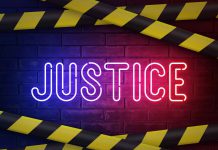
By David Butt

TORONTO – LEGAL ANALYSIS – Gerald Stanley was found not guilty of murdering Colten Boushie. He testified that his gun went off accidentally, and the jury believed him, or at least had a reasonable doubt about accidental discharge. So far, nothing problematic. Typical courtroom stuff.
Now let’s add a couple of key truths.
Gerald Stanley, a white man, was found not guilty of murdering Colten Boushie, a young Indigenous man, by a white jury.
Suddenly sounds ominously different, doesn’t it? And that is the central problem in this case. Our justice system, by permitting a white jury to decide an obviously racially charged case, has let down not just Indigenous people, but all of us.
Trials are meant to deliver social peace, and allow us to move on after acute tragedies tinged with controversy lead to serious criminal charges. Jury trials perform these essential social functions through the rule requiring unanimous verdicts. If 12 regular folks, from the community where the tragedy occurred, listen carefully to all the evidence and arguments from both sides, then all agree on a verdict, that is about as wise a decision as can be expected. Twelve adult jurors collectively apply centuries of accumulated life experience and common sense. Jury verdicts therefore usually allow us to say – win or lose – the community has spoken with one voice, and we all must accept it and move on.
But the sad reality here is that the jury’s verdict is palpably unconvincing, despite the centuries of common sense in the jury room. Because Gerald Stanley and the jurors were white, because Colten Boushie was Indigenous, and because the trial was in a community plagued by a well-documented racist/colonialist past, we can all easily doubt the integrity of the verdict.
Ironically, Mr. Stanley’s evidence, if believed, is certainly enough to earn him an acquittal. So the jury just might have done the right thing, and reached a just result. But because of the racial dynamics, the verdict, whether right or wrong, is incurably tainted. So the outcome is a disservice not just to Indigenous people who see white justice protecting its own; it is also a disservice to all of us who rely on trials to facilitate closure and healing after tragic controversy by dispensing decisions that earn our respect. We cannot respect this decision because whether the jury engaged in racist thought-processes or not, it looks that way. And when it comes to justice, appearance is pretty much reality.
How did this miscarriage of justice happen? And what can we do about it?
When Crown and defence lawyers select jurors at the start of a case, each side has a number of “peremptory challenges,” a number that varies with the offence charged. These peremptory challenges allow each lawyer to automatically disqualify potential jurors, no reasons required. Peremptory challenges are the product of a good idea. Both the Crown, who represents the public, and the defence, rightly deserve some independent power to affect the makeup of a jury.
In this case, the defence used those peremptory challenges to eliminate anyone who looked Indigenous. The defence strategy was transparent, despicable, and it worked: Play the race card for tactical advantage.
But it is simplistic to demonize the defence here. A man was on trial for murder, facing life in prison. The system gave him peremptory challenges, to use as he chose. Every conscientious defence lawyer must take every advantage the law allows. And the law allowed precisely the racist use of peremptory challenges we saw here. So don’t say shame on the defence. Say shame on the legal system for rules that allow for such adversarial ugliness.
There are two ways to fix the problem painfully exposed here. The first is to limit peremptory challenges, or override them if it becomes clear they have created an inappropriately homogeneous jury. The second is to ensure the pool of prospective jurors is so large, and so diverse, that the small number of peremptory challenges allowed cannot possibly prevent a diverse jury.
Imagine a jury verdict in this case from six Indigenous and six white jurors. Whatever the outcome, conviction or acquittal, people would now be saying it was a tough decision, but it transcended racism, and so deserves our respect and acceptance. That dream is worlds away from where we are now, but it is readily attainable for future cases, and so going forward we should demand nothing less.
David Butt is a Toronto-based criminal lawyer.
This article is published with permission and originally ran in The Globe and Mail







